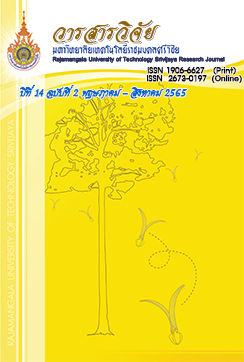Non-Burnt Ground Oyster Shell Waste Interlocking Block
Keywords:
oyster shell waste, not process burning, compressive strength, water absorption, interlocking blockAbstract
This research aims to utilize ground oyster shell waste (OSW) to replace ordinary Portland cement (OPC) in interlocking blocks. OSW was used to replace OPC at 0, 10, 20, 30, 40 and 50 wt% of binder (CT, 10OSW, 20OSW, 30OSW, 40OSW and 50OSW) in interlocking blocks. The ratio of binder (OPC and OSW) to lateritic soil was 1:6 %wt. The properties of interlocking blocks such as compressive strength at 28, 90 days and water absorption capacity at 28 days were investigated. The result showed that at the age of 28 days CT interlocking blocks had compressive strength and water absorption capacity about 6.3 MPa and 79 kg/m3, respectively. At the same age, the interlocking blocks 10OSW, 20OSW, 30OSW, 40OSW and 50OSW had compressive strength about 6.3, 5.6, 5.0, 4.9, 4.8 and 4.5 MPa, respectively, while, the water absorption capacity of interlocking blocks was 79, 84, 91, 121, 148 and 155 kg/m3, respectively. At the later age of 90 days, CT interlocking blocks had compressive strength of about 8.4 MPa, while, the interlocking blocks 10OSW, 20OSW, 30OSW, 40OSW and 50OSW had compressive strength about 7.4, 6.5, 6.0, 5.9 and 5.6 MPa or 88, 77, 71, 70 and 67% of CT interlocking blocks, respectively.
References
ASTM. 2015. ASTM C150. Standard Specification for Portland Cement. ASTM International, PA, USA.
Bin-Yang, Z., Qiang, Z., Chang-Feng, C. and Yan, Y. 2012. Structure and property characterization of oyster shell cementing material. Chinese Journal Structural Chemistry 31(1): 85-92.
Charoennatkul, C. 2014. Interlocking blocks containing oil palm ash and shells waste. Journal of Community Development and Life Quality 2(1): 103-112. (in Thai)
Chiou, I.J., Chen, C.H. and Li, Y.H. 2014. Using oyster-shell foamed bricks to neutralize the acidity of recycled rainwater. Construction and Building Materials 64(C): 480-487.
Dasaesamoh, A., Kabae, Y., Nialee, A., Reebu, S., Mamataeha, P. and Samae, Y. 2015. Effect of improvement of para-rubber wood fly ash on compressive strength. Rajamangala University of Technology Tawan-ok Research Journal 8(1): 66-71. (in Thai)
Djobo, Y.J.N., Elimbi, A., Manga, J.D. and Ndjock, I.D.L. 2016. Partial replacement of volcanic ash by bauxite and calcined oyster shell in the synthesis of volcanic ash-based geopolymers. Construction and Building Materials 113(2016): 673-681.
Ez-Zaki, H., Diouri, A., Kamali-Bernard, S. and Sassi, O. 2016. Composite cement mortars based on marine sediments and oyster shell powder. Materiales de Construcción 66(321): e080. doi: https://doi.org/10.3989/mc.2016.01915.
Fishery Statistics Analysis and Research Group. 2018. Statistics of Marine Shellfish Culture Survey 2017. Information and Communication Technology Center, Department of Fisheries, Ministry of Agriculture and Cooperatives 2018. Available Source. https://www.fisheries.go.th/strategy-stat/themeWeb/books/2560/.pdf, March 27, 2019. (in Thai)
Klathae, T. and Horpet, P. 2019. Compressive strength and autogenous shrinkage properties of cement paste containing ground oyster shell. Thai Science and Technology Journal 27(4): 752-763. (in Thai)
Lertwattanaruk, P., Makul, N. and Siripattarapravat, C. 2012. Utilization of ground waste seashells in cement mortars for masonry and plastering. Journal of Environmental Management 111(2012): 133-141.
Li, G., Xu, X., Chen, E., Fan, J. and Xiong, G. 2015. Properties of cement-based bricks with oyster-shells ash. Journal of Cleaner Production 91: 279-287.
Olivia, M., Mifshella, A.A. and Darmayanti, L. 2015. Mechanical properties of seashell concrete. Procedia Engineering 125: 760-764.
Siripattarapravat, C. 2009. Influence of ground seashells on properties of plastering mortar. Master of Architecture and Planning. Thammasat University. (inThai)
Thai Industrial Standards Institute (TISI). 2004. Community Product Standard 602/2004. Interlocking blocks non-load bearing type. Ministry of Industry, Bangkok. (in Thai)
Yang, E.I., Yi, S.T. and Leem, Y.M. 2005. Effect of oyster shell substituted for fine aggregate on concrete characteristics: Part I. Fundamental properties. Cement and Concrete Research 35(11): 2175-2182.
Yao, Z., Xia, M., Li, H., Chen, T., Ye, Y. and Zheng, H. 2014. Bivalve shell: not an abundant useless waste but a functional and versatile biomaterial. Critical Reviews in Environmental Science and Technology 44(22): 2502-2530.
Yoon, H., Park, S., Lee, K. and Park, J. 2004. Oyster shell as substitute for aggregate in mortar. Waste Management & Research 22(3): 158-170.
Downloads
Published
How to Cite
Issue
Section
License
Copyright (c) 2022 Rajamangala University of Technology Srivijaya Research Journal

This work is licensed under a Creative Commons Attribution-NonCommercial-NoDerivatives 4.0 International License.
The content and information in the article published in Journal of Rajamangala University of Technology Srivijaya It is the opinion and responsibility of the author of the article. The editorial journals do not need to agree. Or share any responsibility.







